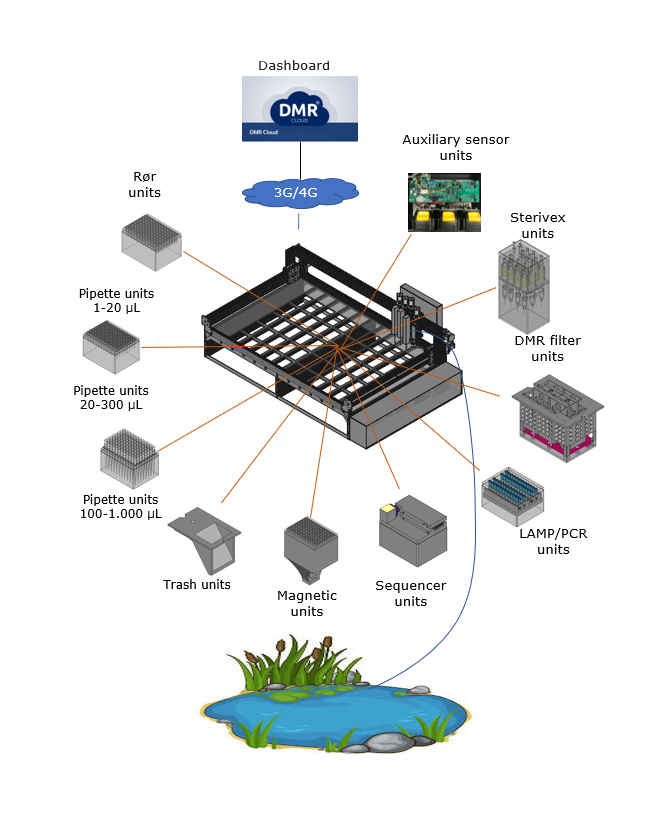
Application environmental DNA (eDNA) has proven to be a very useful tool for effective and improved surveillance of the environment as many different species can be detected in a water sample. Environmental DNA has the potential for detection of e.g., invasive and endangered species.
Even though eDNA applications has proven its potential, and all parts of the analysis are relatively standard in many commercial laboratories, it is still necessary to collect the sample and transport it to the laboratory for analysis. As many sites are relatively remote, this is probably one of the largest challenges for routine eDNA environmental surveillance.
As all steps of eDNA sampling, handling, and analysis are routine yet manual tasks, it is realistic to envision and develop an automated solution for eDNA surveillance. Basically, it is a matter of automating the individual manual steps mentioned above.
We are finding ourselves at the forefront of automation and AI, with novel robotics being developed and implemented across the world. This is promoted through different electronics development platforms such as Arduino and Raspberry Pi, which are relatively simple and cost-effective means to get started with design and prototyping of equipment. The “internet of things” is another driver for the large expansion of automation, and has been incorporated from the start by e.g. Arduino and Raspberry Pi, making remote monitoring relatively simple.
The possibility of automated eDNA surveillance, as requested by the Norwegian Environmental Protection Agency, can be achieved through the combination of existing standard methods for eDNA testing with readily available mature platforms for automatic electronic prototypes, and remote sampling and analysis.
Our solution to eDNA automation is a fully automated field robot placed in an off-road trailer. This robot can be equipped with different units/modules, depending on the project for which you are using the robot.
We have developed modules for:
- Pipette tips.
- Tubes with sterile chemicals.
- A trash unit.
- Magnetic unit for magnetic bead purification.
- Sequencer unit based on automation of the MinION from Oxford Nanopore.
- DMR filter Unit optimized for filtration.
- Filter unit for automated sampling on Sterivex filters.
- Auxiliary sensor unit for intelligent surveillance of the water body being sampled.
The basic robotic platform (The automated field DNA laboratory – AFDLAB) is equipped with 3 pipettes and a sampler tool and room for 50 modules in the first prototype which is being tested right now.
It can 100 % automatically:
- Sample for eDNA analysis.
- Conserve the sample.
- Extract eDNA.
- Purify the DNA.
- Run Loop amplified Isothermal Amplification.
- Run PCR.
- Perform 16S rRNA sequencing.
- Send species data to the cloud and present it as a time series.
AFDLAB is with its modular design extremely flexible and we can relatively easy design new modules in the future to adapt other analysis. Furthermore, it is completely self-sufficient with green energy, as the trailer is equipped with solar panels and a fuel cell running on methanol.
As a spin-off product, the DMR eDNA filter has been designed. The benefit of this filter holder compared to Steriwex filters which is the golden standard for most eDNA protocols is that it has 3 times the filter area which gives a much better detection limit, and it can be disassembled to load it with new filters. The DMR eDNA filter holder can be purchased via the webshop.
For more information about the project and AFDLAB please contact one of our experts listed below.

